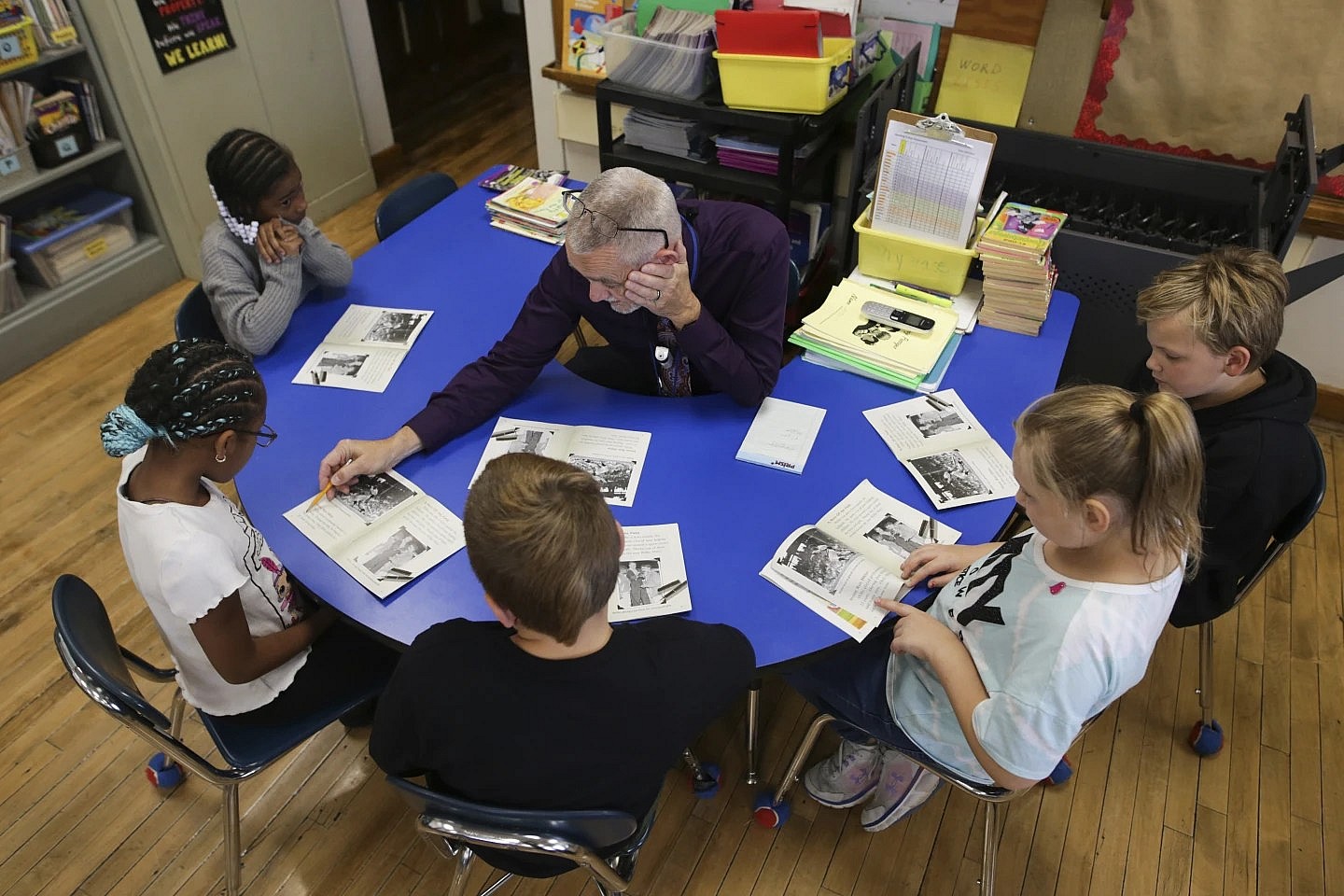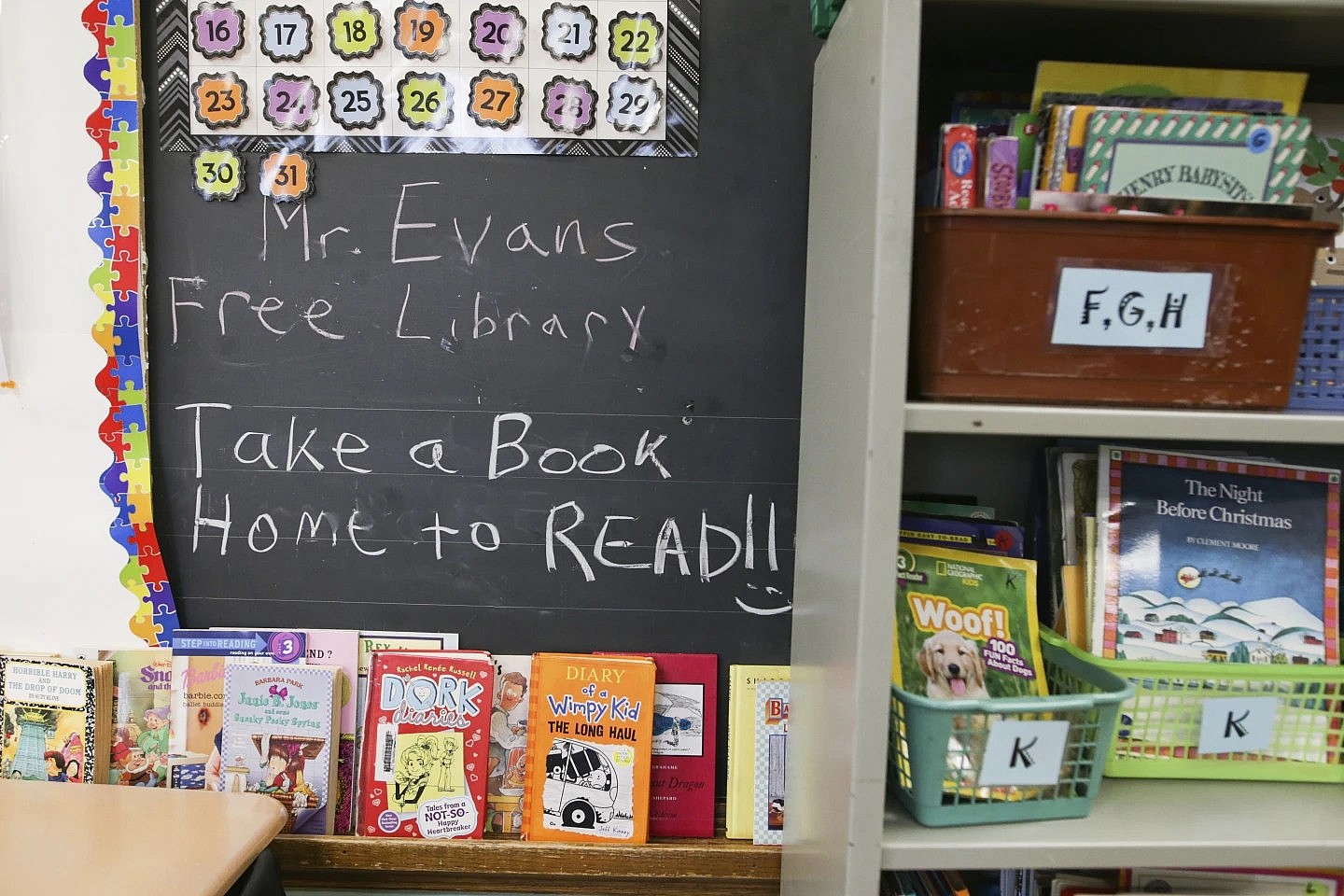They were the kids most disrupted by the pandemic, the ones who were still learning to write their names and tie their shoes when schools shut down in the spring of 2020.
Now, they’re the big kids at elementary schools across the United States. Many still need profound help overcoming the effects of the pandemic.
To catch up, schools have deployed a wide range of strategies. And among some incoming fourth-graders, there are encouraging signs of gains. But as this generation progresses, many will need extra reading support that schools are not as accustomed to providing for older students.

Beyond third grade, fewer teachers each year know how to help students who are lacking key foundational reading skills, said Elizabeth Albro, an executive at the U.S. Department of Education’s independent research arm, the Institute of Education Sciences.
“Middle and high school teachers aren’t expecting to have to teach kids how to read,” Albro said.
Nationally, students suffered deep learning setbacks in reading and math during the pandemic. Last year’s third-graders, the kids who were in kindergarten when the pandemic started, lost more ground in reading than kids in older grades and were slower to catch up. With federal pandemic relief money, school systems added class time, brought on tutors, trained teachers in phonics instruction and found other ways to offer extra support to struggling readers.
But even after several years of recovery, an analysis of last year’s test scores by NWEA found that the average student would need the equivalent of 4.1 additional months of instruction to catch up to pre-COVID reading levels.
The one bright spot was for incoming fourth-graders, who made above-average gains and would need about two months of additional reading instruction to catch up. Karyn Lewis, who leads a team of education policy researchers at NWEA, described them as “a little bit less worse off.”
The school system in Niagara Falls, New York, is seeing similar results, said Marcia Capone, the district’s assessment administrator. The district brought on additional reading specialists, but Capone said it will take time to bring struggling students up to speed.
“I do not believe it’s hopeless, but it’s not something that’s going to occur in, say, three years’ time,” Capone said.
The problem for children who don’t master reading by third grade: School becomes that much harder in later grades, as reading becomes the foundation for everything else.
Schools have plenty of experience with older students who struggle. Even before the pandemic, only about a third of fourth graders scored as proficient in reading in the National Assessment of Educational Progress, known as the “nation’s report card.”
But the pandemic made it worse, particularly for low-income students and kids of color.
So some schools are targeting some upper-grade students with the “science of reading,” a push to embrace research-backed strategies for reading based on phonics. Many new laws endorsing the phonics-based approach target students beyond third grade, according to a July report from the nonpartisan Albert Shanker Institute.
In Virginia, for instance, a law signed in March mandates extra help for struggling readers through eighth grade. It is one of the most aggressive efforts yet.
“There’s an implicit recognition,” wrote the authors of the Shanker report, “that reading improvement needs to address a greater span of grades, and that reading difficulties do not necessarily end in 3rd grade.”

That will require a major shift. Historically, phonics and help decoding words have gradually disappeared in the upper grades.
Most English teachers at that level are no more prepared to teach a student to read than a math teacher would be, said Miah Daughtery, who advocates for effective literacy instruction for the NWEA research organization.
“They’re prepared to teach text,” she said. “They’re prepared to teach literature, to analyze ideas, craft, story structure, make connections.”
The federal pandemic relief money that bolstered many schools’ academic recovery efforts soon will run out, leaving some experts less optimistic.
“We’re past the point where we’re likely to see a quick rebound,” said Dan Goldhaber, of the American Institutes for Research.
Teachers are reporting it is taking more time to get through material, according to Tonya Perry, the vice president of the National Council of Teachers of English. Some school systems are turning to programs that break grade-level subject matter down into a variety of reading levels, so strong and weak readers can still learn the concepts, she said.
“Now we have to spend more time building the foundation for what we’re asking students to do,” she said.
Early in the pandemic, some students repeated a grade. But that was only a short-term solution, often taken reluctantly because of concerns about the effect on kids’ social lives and academic futures. By last year, grade retention numbers were trending downward again.
One thing teachers can do is rely less on silent reading in class, and instead have small group activities in which strong and weak readers can be paired together, Daughtery said.
Lewis, of the NWEA, said the takeaway should not be that the COVID kids are beyond help.
“The message has to be: We’re doing the right things. We’re just not doing enough of it,” she said. “And we need to amp up and certainly not take our foot off the gas pedal anytime soon.”
TheGrio is FREE on your TV via Apple TV, Amazon Fire, Roku and Android TV. Also, please download theGrio mobile apps today!

